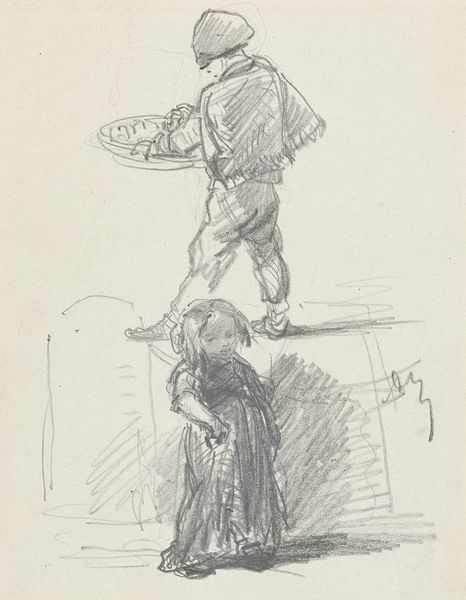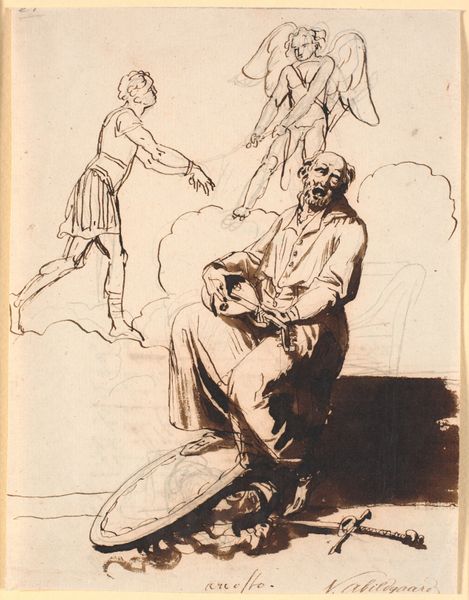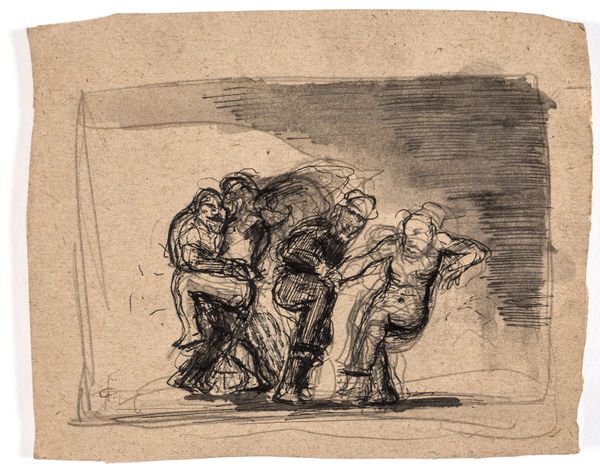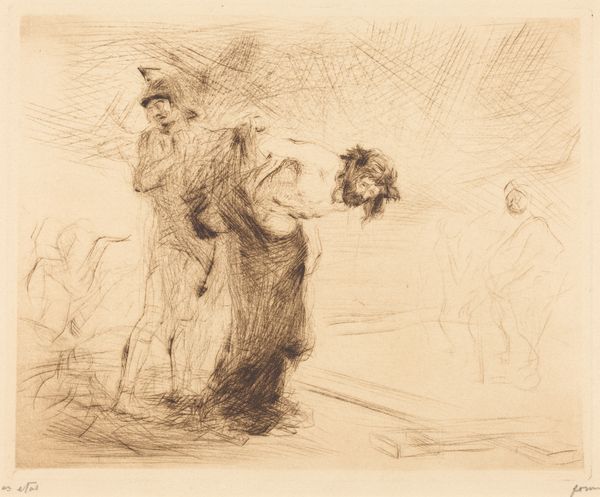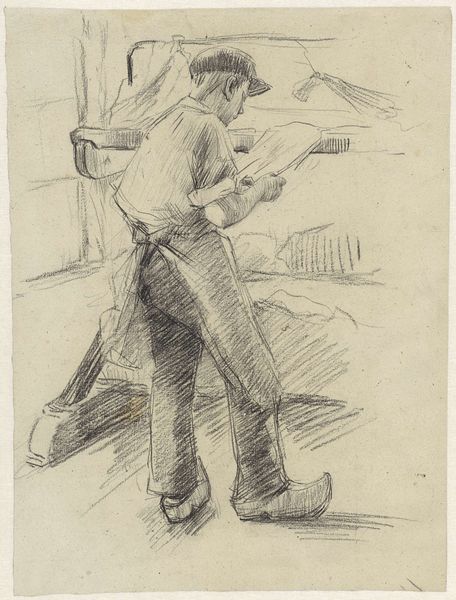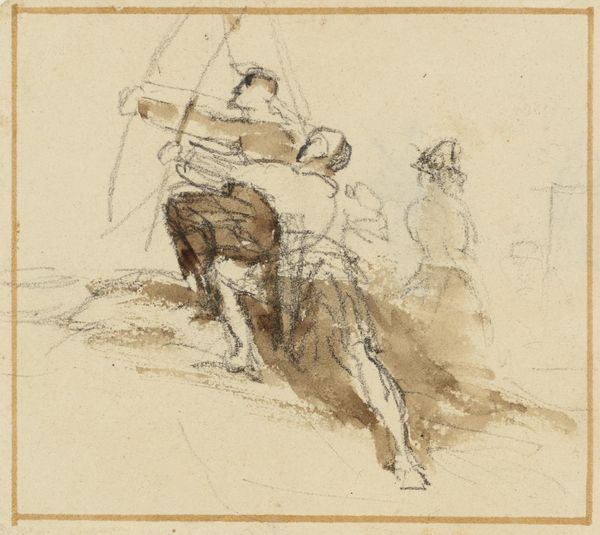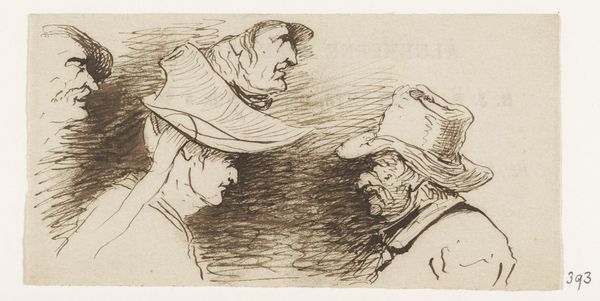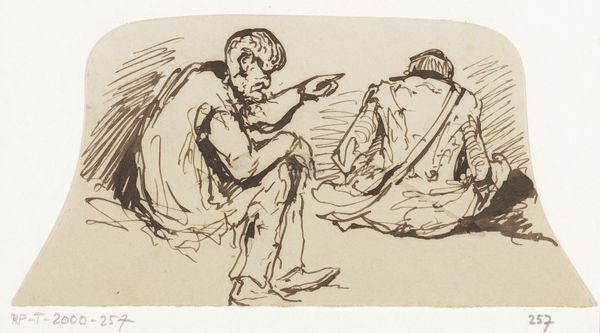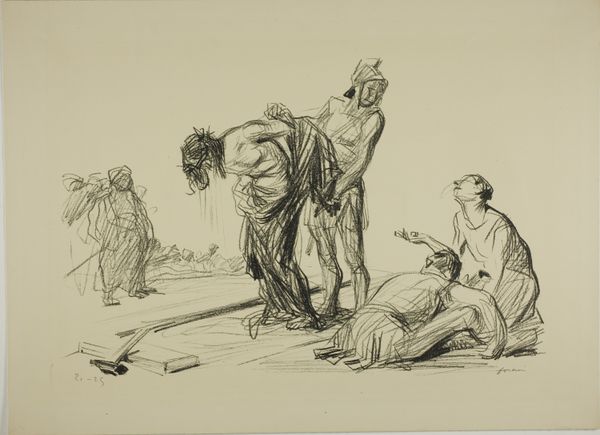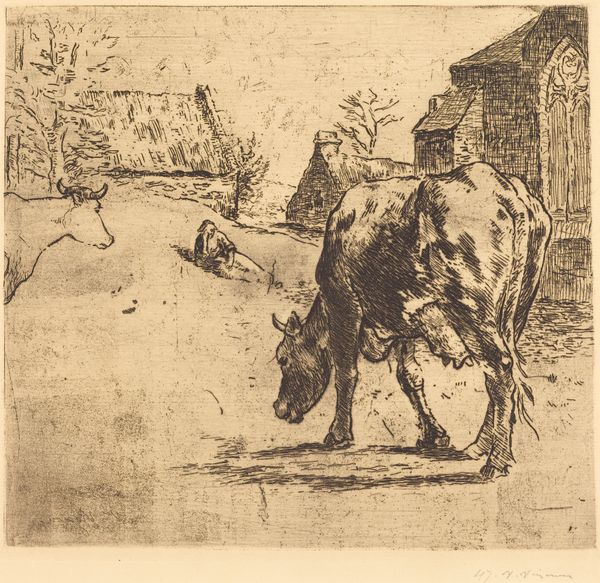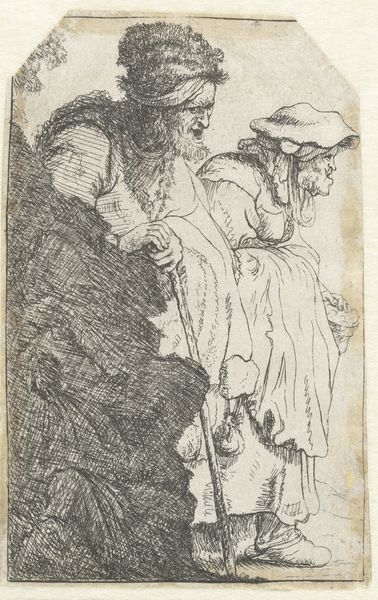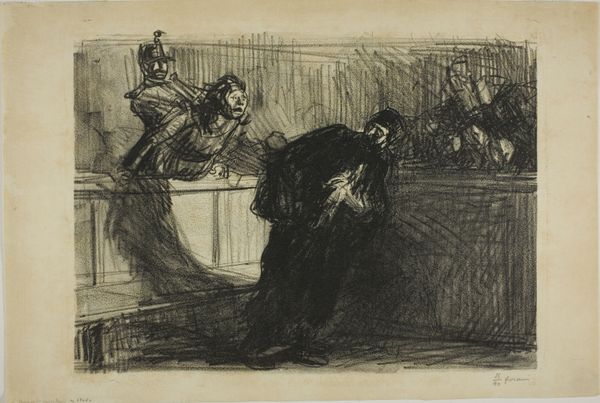
drawing, ink, pen
#
drawing
#
pen sketch
#
pencil sketch
#
figuration
#
ink
#
pen-ink sketch
#
pen
#
genre-painting
#
italian-renaissance
Dimensions: sheet: 21.1 × 34.7 cm (8 5/16 × 13 11/16 in.)
Copyright: National Gallery of Art: CC0 1.0
Curator: Giovanni Battista Piranesi’s ink drawing, “Two Workmen at Tables,” from the early 1770s presents two figures in a seemingly candid moment. Editor: My initial impression is one of stark simplicity. The composition is incredibly economical—the artist captures the essence of these figures with the barest of lines. Curator: Absolutely. The starkness serves to emphasize the raw lines, the gestural quality of Piranesi’s hand. Note the varied use of hatching to define form and shadow. Editor: And these are clearly working-class men. Look at their worn clothing, the somewhat slumped posture of the figure leaning on the table. It speaks volumes about their social standing, the physical labor they likely endure daily. There’s a social realism here that’s quite compelling. Curator: Yes, one sees in his oeuvre the nascent elements of the Enlightenment, valuing empiricism and observable fact. What I find most fascinating is Piranesi's use of negative space. The emptiness surrounding the figures amplifies the visual weight, pushing the eye directly towards the figures. It creates a dialogue between form and void, structure and non-structure. Editor: It is precisely that ‘void’ that speaks to me most powerfully. Their isolation, the sense that these men are detached from a broader context, hints at the alienation experienced by the working class during this period of proto-industrialization. It implicitly critiques the power structures of 18th-century Europe. Curator: While that may be present, consider also the inherent formal harmony. Notice how the line of the table runs nearly parallel with the base of the page, and both figures are in similar stances. These give the drawing a structure that creates internal logic to what is happening on the page. Editor: I concede there are echoes, repeated forms creating a harmonious tension. But I read their bowed postures as reflective of labor that not only tires the body but also diminishes the spirit. The act of repetition mirrors not harmony but rather monotony. Curator: I suppose these men remind us that what we see—or think we see—is always a partial view. The elegance and the potential critique is what defines this drawing's depth. Editor: It stands as a visual record of the unsung voices, even now these two workmen demand that we remember them as subjects within a rapidly transforming society.
Comments
No comments
Be the first to comment and join the conversation on the ultimate creative platform.
